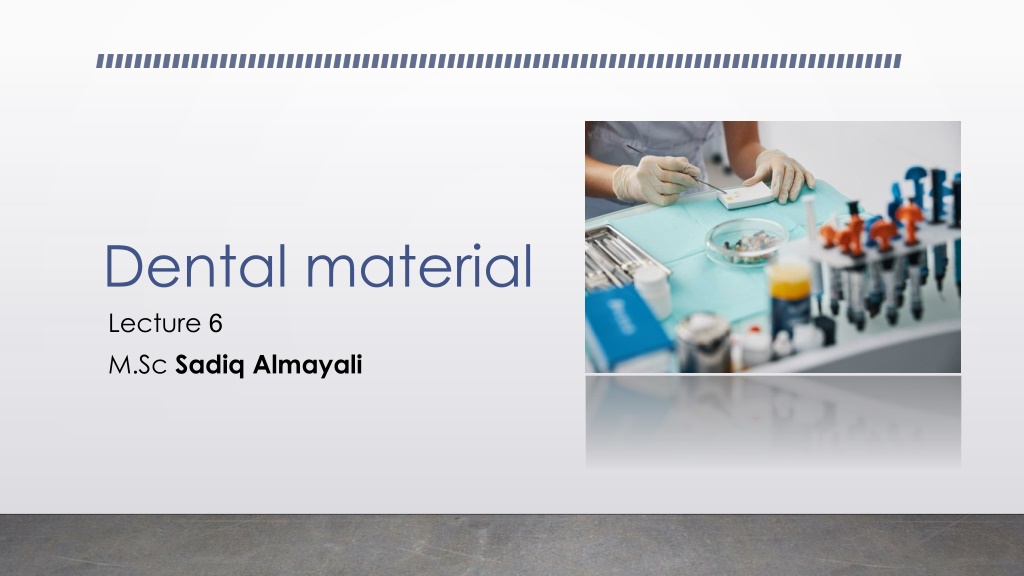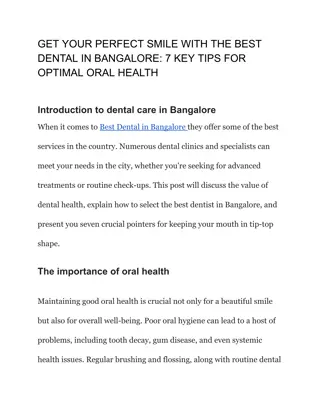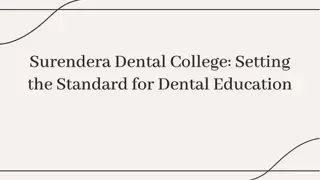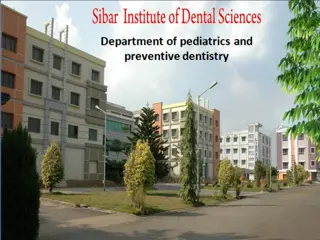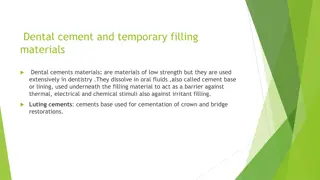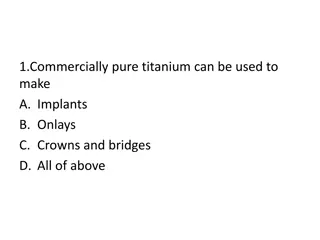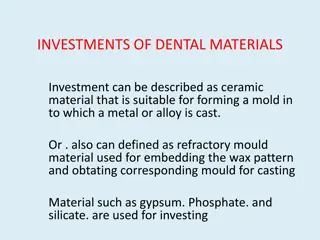Understanding Rheology in Dental Materials
Rheology is a crucial aspect in dentistry as it deals with the flow properties of various dental materials, including liquids like molten alloy and impression materials. Viscosity plays a key role, determining how materials flow and behave. Different fluid classifications based on rheology, such as Newtonian, Pseudoplastic, and Dilatant, impact material properties and applications. Thixotropic materials change viscosity under shear force, while structural relaxation in solids involves processes like stress relaxation and creep. This comprehensive overview emphasizes the significance of rheology in the field of dental materials.
Download Presentation

Please find below an Image/Link to download the presentation.
The content on the website is provided AS IS for your information and personal use only. It may not be sold, licensed, or shared on other websites without obtaining consent from the author. Download presentation by click this link. If you encounter any issues during the download, it is possible that the publisher has removed the file from their server.
E N D
Presentation Transcript
Dental material Lecture 6 M.Sc Sadiq Almayali
Rheology Rheology is the study of flow of matter. In dentistry, study of rheology is necessary because many dental materials are liquids at some stage of their use, e.g. molten alloy and freshly mixed impression materials and cements. Other materials appear to be solids but flow over a period of time.
Viscosity Viscosity is the resistance of a fluid to flow, e.g. honey is more viscous than water. It is measured in poise (p) or centipoise (cp) (1 cp = 100p).
Classification of fluids based on rheology 1. Newtonian: The viscosity of a newtonian fluid is constant and independent of shear rate. e.g., some dental cements
Classification of fluids based on rheology 2. Pseudoplastic: The viscosity of a pseudoplastic fluid decreases with increasing shear rate. e.g., elastomeric impression materials.
Classification of fluids based on rheology 3. Dilatant: The viscosity of a dilatant fluid increases with increasing shear rate. e.g. fluid denture base.
Thixotropic It is a property of some materials which change their viscosity and become more fluid when subject to constant shear forceand reset after being allowed to stand. Plaster of Paris, resin cements, and some impression materials are thixotropic.
Structural Relaxation Structural relaxation is a rheological phenomenon of solids that occurs so slowly that it is not noticed until the process completes. The two categories of interest in dentistry are (1) stress relaxation and (2) creep and flow.
Stress Relaxation When substances are deformed, internal stresses get trapped because of the displacement of the atoms. The condition is unstable and the atoms try to return to their original positions. This results in a change in shape or contour in the solid as atoms or molecules rearrange themselves. This change in shape due to release of stresses is known as relaxation. The material is said to warp or distort. e.g., wax
Creep and flow Creep is defined as the time-dependent plastic deformation or change of shape that occurs when a metal is subjected to a constant load near its melting point. This may be static or dynamic in nature Static creep is a time dependent deformation produced in a completely set solid subjected to a constant stress. Dynamic creep produced when the applied stress is fluctuating.
Creep and flow Flow is similar to creep. In dentistry, the term flow is used instead of creep to describe rheology of amorphous substances, e.g. waxes. Creep or flow may be measured under compressive load for a specified time and temperature.
